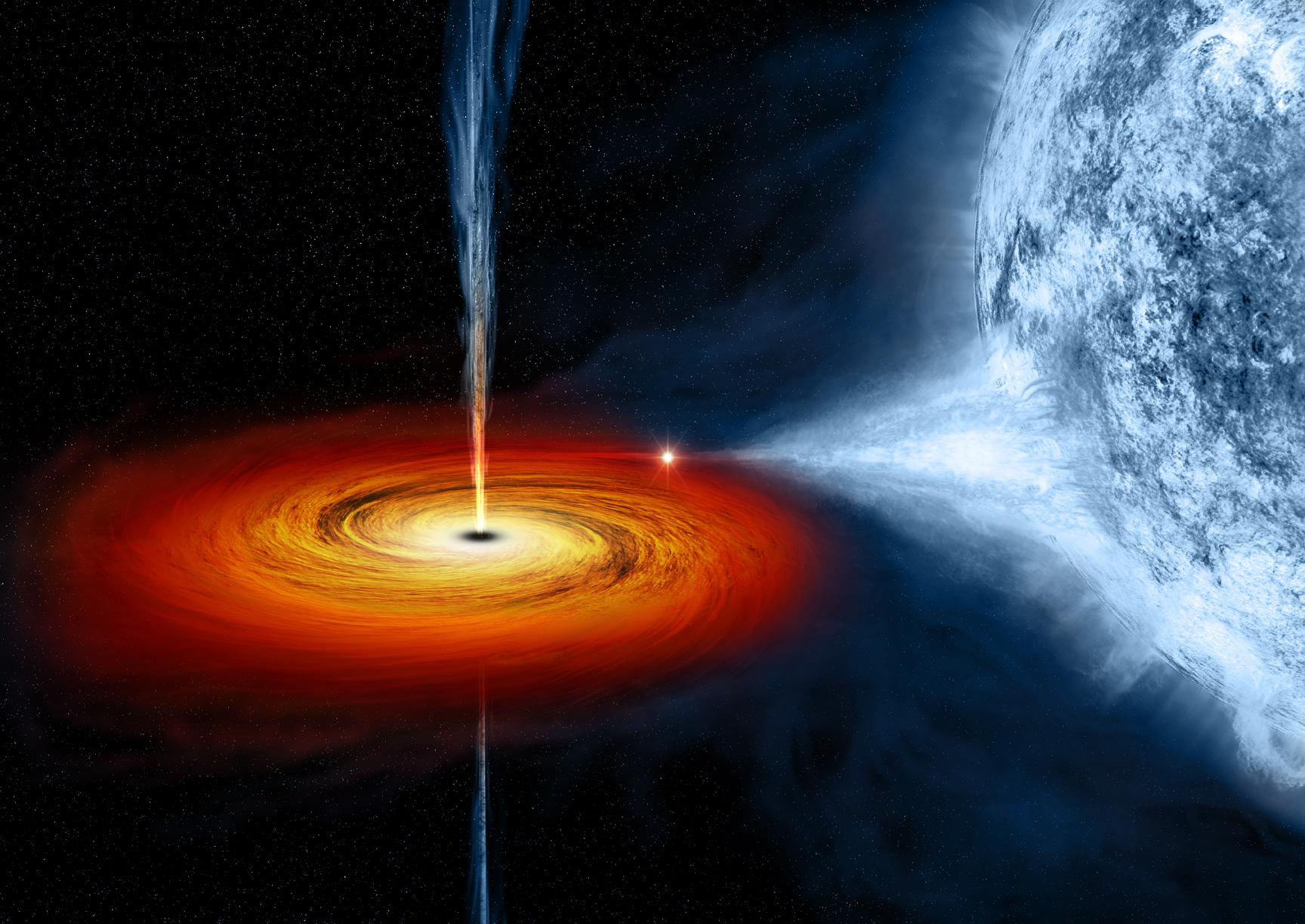A high-powered telescope peers into the dark heart of a black hole
An artist’s drawing of a black hole named Cygnus X-1. It formed when a large star caved in. This black hole pulls matter from a blue star beside it.
There's a supermassive black hole lurking at the heart of every galaxy. Our own galaxy, the Milky Way, has one at its center called Sagittarius A. Now, a high-powered NASA telescope is helping scientists understand black holes like never before.
“Black holes aren't just a minor constituent of the universe,” says Fiona Harrison, a professor of astronomy and physics at Caltech. “They're in every galaxy and they help shape the galaxy.”
Harrison developed the new telescope, NuSTAR, which uses high-energy x-rays to probe black holes and is 100 times more sensitive than previous x-ray telescopes. She is also the principal investigator of its NASA mission.
NuSTAR recently spotted a rare event: The outer area of a black hole, a region called the corona, suddenly collapsed. That illuminated the innermost regions of the black hole, where the gravitational pull is so powerful it blurs the light.
Capturing the blurring of light was a confirmation of Einstein’s theory of strong gravity. “There have been many precision tests of Einstein's Theory of Relativity, but in regions where gravity is not so strong,” Harrison explains. “One of the only regions in the universe where gravity is strong enough to really put Einstein's theory to the full test is very near a black hole.”
NuSTAR can’t capture pictures of black holes themselves because, by defintion, they emit no light. But, as Harrison explains, “black holes don’t live in isolation; they live in galaxies with other matter, like dust and gas. This stuff falls on it … When this material gets very hot, particles get accelerated to the speed of light and emit x-rays. So if you want to see the regions closest to the hole, you look at the x-rays.”
And that's what NuSTAR does. Unlike an optical telescope, which focuses visible light, NuSTAR focuses x-rays. X-rays and visible light are related — they are both electromagnetic radiation — but x-rays are much smaller. “If you think of the waves of the ocean,” Harrison says, “the distance between the crests of the waves for an x-ray is the size of an atom, [whereas] for a radio wave, it might be meters.”
NuSTAR collects these x-rays, focuses them, and makes “pictures” of the universe “by breaking the x-rays into constituent colors — by basically looking at an x-ray rainbow," Harrison explains.
During the recent event, the brightness of the collapsing corona allowed scientists to look deeper into a black hole than ever before, very close to what’s known as the event horizon — the point at which nothing, not even light, can escape the black hole’s gravitational pull.
“Black holes aren't static, they're very dynamic,” Harrison explains, “and we could tell that this particular black hole is spinning very rapidly.” Measuring the spin of a supermassive black hole provides a window into its past and may give astronomers a better understanding of how black holes and galaxies evolve.
NuSTAR also might have uncovered the very first “medium-sized" black hole.
Scientists have long been certain about the existence of two sizes of black hole: primordial black holes so dense they may be the size of a single atom but have the mass of a large mountain; and supermassive black holes, like the ones at the center of galaxies. They have been less sure, however, about the existence of medium-sized black holes.
According to Hubblesite.org, “The discovery of [this] black hole and the possible star cluster has important implications for understanding the evolution of supermassive black holes and galaxies.”
Harrison called the recent discovery “tantalizing,” adding that, because the black hole was located in an area thought to be inhospitable to black hole formation, “it will give theorists lots to chew on.”
This story is based on an interview that aired on PRI's Science Friday with Ira Flatow.
